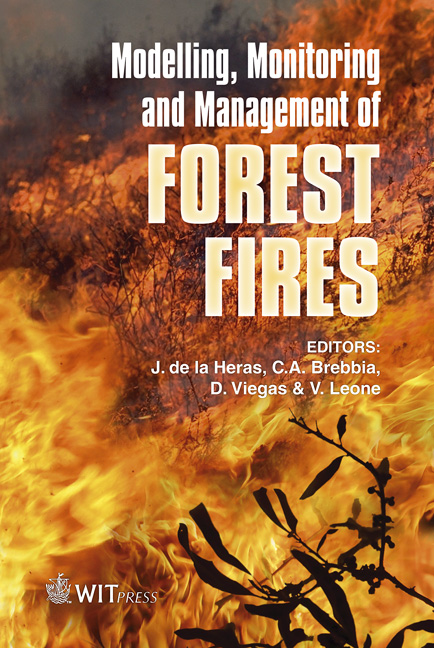Smouldering Natural Fires: Comparison Of Burning Dynamics In Boreal Peat And Mediterranean Humus
Price
Free (open access)
Transaction
Volume
119
Pages
10
Page Range
183 - 192
Published
2008
Size
914 kb
Paper DOI
10.2495/FIVA080191
Copyright
WIT Press
Author(s)
G. Rein, J. Garcia, A. Simeoni, V. Tihay & L. Ferrat
Abstract
Smouldering of the forest subsurface can be responsible for a large fraction of the total fuel consumed during wildfires. Subsurface fires can take place in organic material stored in shallow forest layers such as duff or humus, and in deeper layers such as peat, landfills and coal seams. These fires play a major role in the global emission to the atmosphere, the destruction of carbon storage in the soil and the damage to the natural environment. Burning dynamics in two different ecosystems affected by smouldering wildfires are studied here; boreal peat and Mediterranean humus. A series of small-scale smouldering experiments have been conducted under laboratory conditions to study the ignition and the severity to the soil. The experimental set-up allowed the temperature and velocity of the fire front to be measured for different fuel moisture contents. The two fuels, peat and humus, were tested and the results are compared. Keywords: subsurface, wildfire, organic soil, duff, smoulder. 1 Introduction When a layer of organic soil ignites, it burns steadily without flames and propagates slowly into the soil. Large smouldering fires are rare events at the local scale but occur regularly at the global scale. Once ignited, they are particularly difficult to extinguish despite extensive rains or firefighting attempts and can linger for long periods of time (weeks and up to years; Page et al. [1]; Svensen et al. [2]), and spread over very extensive areas of forest and deep into the soil. By propagating below the surface, smouldering fires offer the means for
Keywords
subsurface, wildfire, organic soil, duff, smoulder.





